第74章
What sense is to sense is nothing for thought.What sense is to thought, it is as determined by thought.There can, therefore, be no 'reality' in sensation to which the world of thought can be referred." (Edward Caird's Philosophy of Kant, 1st ed.pp.393-4.) "When," says Green again, "feeling a pain or pleasure of heat to be connected with the action of approaching the fire, am I not receiving a relation of which one constituent, at any rate, is a simple sensation? The true answer is No." "Perception, in its simplest form...-- perception as the first sight or touch of an object in which is seen or touched is recognized -- neither is nor contains sensation.( Contemp.Rev., xxxi.pp.746, 750.) "Mere sensation is in truth a phrase that represents no reality." "Mere feeling, then, as a matter unformed by thought, has no place in the world of facts, in the cosmos of possible experience." (Proglegomena to Ethics, §§
46, 50.) -- I have expressed myself a little more fully on this subject in mind, x.27 ff.
Stumpf: Tonpsychologie, i.Pp.7,8.Hobbes's phrase, sentire semper idem et non sentire ad idem recidunt, is generally treated as the original statement of the relativity doctrine.J.S.Mill ( Examn.of Hamilton, p.6) and Bain (Senses and Intellect.
p.321; Emotions and Will, pp.550, 570-2; Logic, i.p.2; Body and Mind, p.81) are subscribers to this doctrine also J.S.Mill's analysis, J.
S.Mill's edition, ii.11, 12.
We can steadily hear a note for half an hour.The difference between the senses are marked.
Smell and taste seem soon to get fatigued.
In the popular mind it is mixed up with that entirely different doctrine of the 'Relativity of Knowledge' preached by Hamilton and Spencer.This doctrine says that our knowledge is relative to us , and is not of the object as the latter is in itself.It has nothing to do with the question which we have been discussing, of whether our objects of knowledge contain absolute terms or consist altogether of relations.
What follows in brackets, as far as p.27, is from the pen of my friend and pupil Mr.E.
B.Delabarre.
Classics editor's note: James' insertion.
These phenomena have close analogues in the phenomena of contrast presented by the temperature-sense (see W.Preyer in Archiv f.d.ges Phys., Bd.xxv.p.79 ff.).Successive contrast here is shown in the fact that a warm sensation appears warmer if a cold one has just previously been experienced; and a cold one colder, if the preceding one was warm.If a finger which has been plunged in hot water, and another which has been in cold water, be both immersed in lukewarm water, the same water appears cold to the former finger and warm to the latter.In simultaneous contrast, a sensation of warmth on any part of the skin tends to induce the sensation of cold in its immediate neighborhood;
and vice versá.This may be seen if we press with the palm on two metal surfaces of about inch and a half square and three-fourths inch apart;
the skin between them appears distinctly warmer.So also a small object of exactly the temperature of the palm appears warm if a cold object, and cold if a warm object, touch the skin near it.
Helmholtz, Physiolog.
Optik, p.392.
Loc.cit.
p.407.
Loc.cit.
p.408.
Loc.cit.
p.406.
E.Hering, in Hermann's Handbuch d.Physiologie, iii.1, p.565.
Hering: 'Zur Lehre vom Lichtsinne.' -- Of these experiments the following (found on p.24
ff.) may be cited as a typical one: "From dark gray paper cut two strips 3-4 cm.long and ½ cm.wide, and lay them on a background of which one half is white and the other half deep black, in such a way that one strip lies on each side of the border-line and parallel to it, and at least 1 cm.distant from it.Fixate ½ to 1 minute a point on the border-line between the strips.One strip appears much brighter than the other.Close and cover the eyes, and the negative after-image appears...The difference in brightness of the strips in the after-image is in general much greater than it appeared in direct vision....This difference in brightness of the strips by no means always increases and decreases with the difference in brightness of the two halves of tile background....phase occurs in which the difference in brightness of the two halves the background entirely disappears, and yet both after-images of the strips are still very clear, one of them brighter and one darker than the back ground, which is equally bright on both halves.Here can no longer be any question of contrast-effect, because the conditio sine qua non of contrast, namely, the differing brightness of the ground, is no longer present.This proves that the different brightness of the after-images of the strips must have its ground in a different state of excitation of the corresponding portions of the retina, and from this follows further that both these portions of the retina were differently stimulated during the origin observation;
for the different after-effect demands here a different effect....In the original arrangement, the objectively similar strips appeared of different brightness, because both corresponding portions retina were truly differently excited."
Helmholtz, Physiolog.
Optik, p.407.
In Archiv f.d.
ges.Physiol., Bd.XLI.S.1 ff.
Helmholtz, loc.
cit.p.412.
See Hering: Archiv.
f.d.ges.Physiol., Bd.XLI.S.358 ff.
Hering: Archiv f.d.ges.Physiol., Bd.XL.B.172 ff.; Delabarre: American Journal of Psychology, ii.636.
Hering: Archiv f.d.ges.Physiol., Bd.XLI.S.91 ff.
Die Gesichtsempfindungen u.ihre Analyse, p.128.
Classics editor's note: James' insertion.
Mr.Delabarre's contribution ends here.